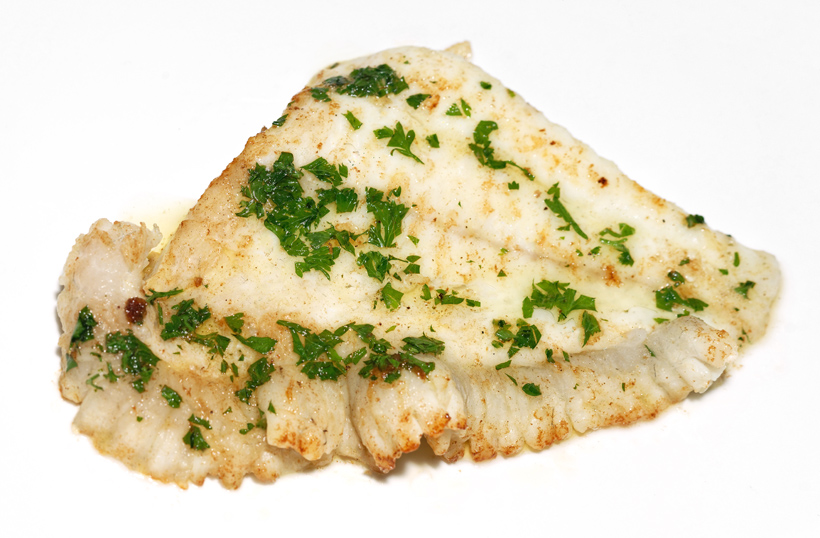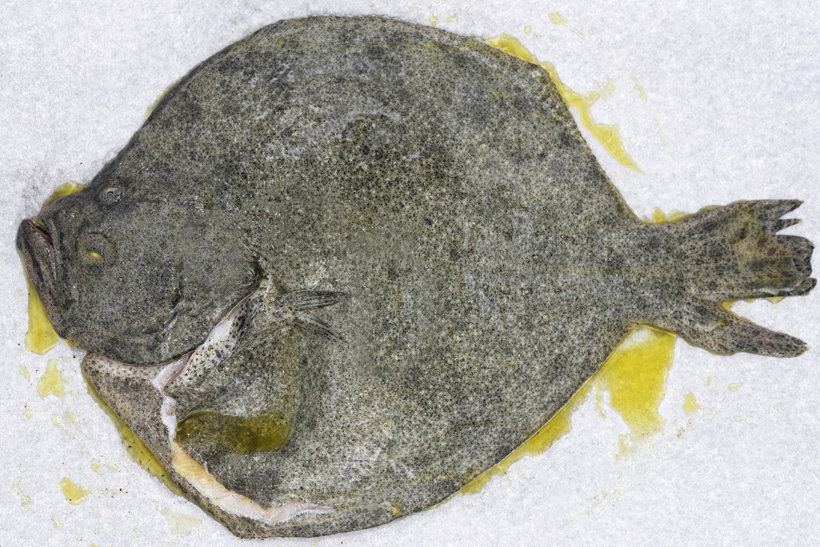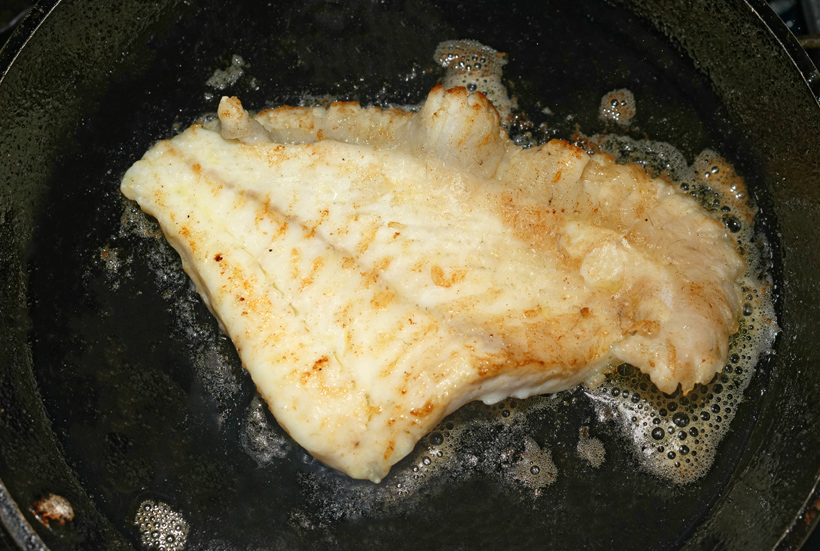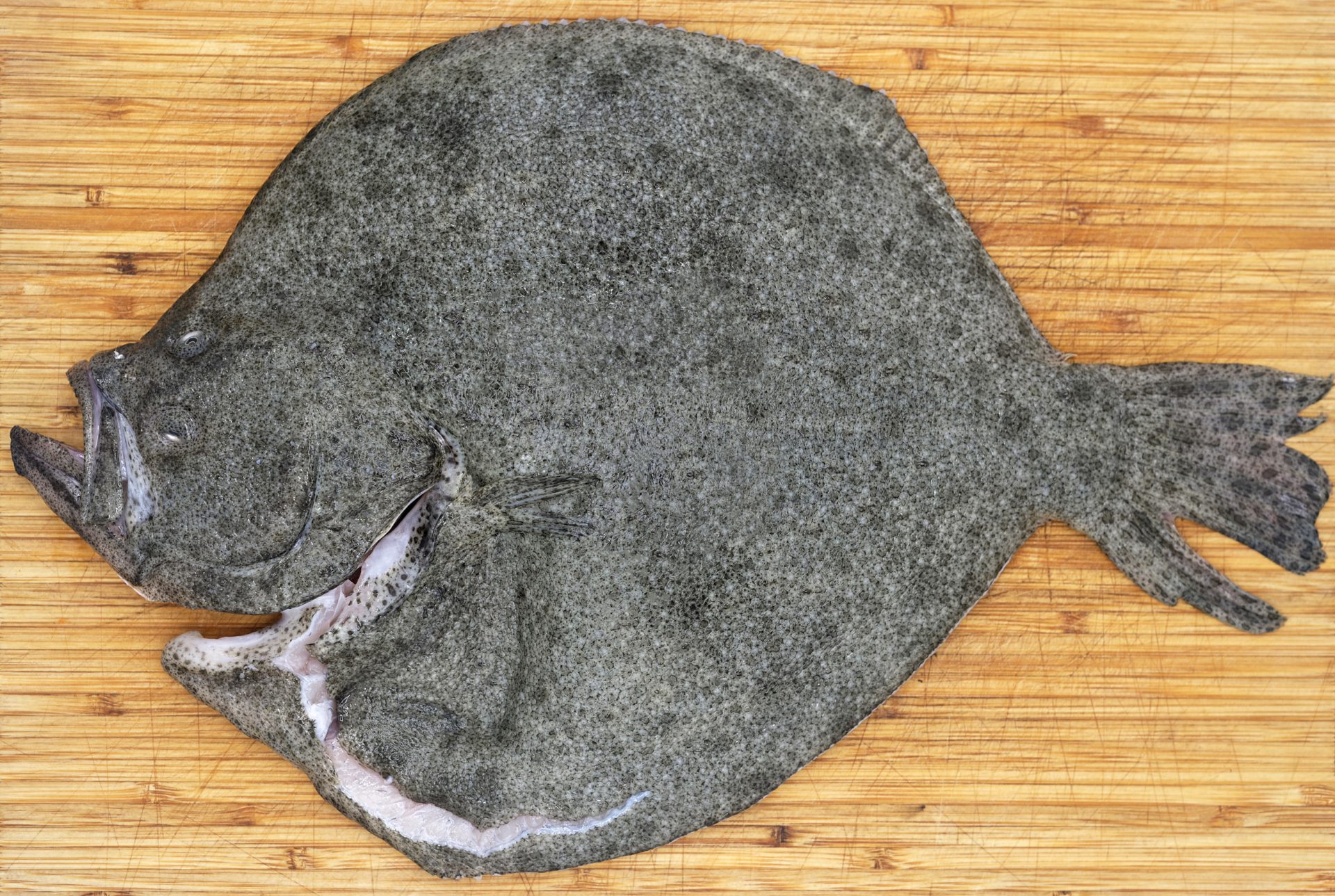My last recipe brought you the Dalmatian stew, a delicious mix of Swiss chard and potatoes. As I mentioned, this is one of Croatia’s most popular side dishes to eat with fish, and fish is everywhere in Dalmatia. So before venturing into more complex dishes, you must first know how to cook fish properly! To illustrate my point, I’ve picked a species that’s considered by many as one of the very best: turbot.
Granted, turbot isn’t the most common fish in Croatia. Over the past decades, it has been overfished, falling victim to its own popularity. According to the IUCN Red List of Threatened Species, turbot is a near-threatened species, and its population is declining. In western Europe, wild turbot fetches $60-80 a kilo, and that’s for the whole fish, with the skin, head, tail, and bones – the actual meat represents only one third of the total weight. The good news is that turbot is now farmed (though not in substantial amounts in Croatia). At home in New York, I can get farmed turbot for $25 a kilo. It may not be as great as its wild counterpart, but it’s already a damn fine fish.
Years ago, back when I worked at David Bouley‘s Danube restaurant, I cooked at the fish station for longer than any other station. While this gave me plenty of time to understand and master the peculiarities of each different species, there are two broad points that I want to emphasize:
- Fish is best when minimally cooked. The proteins in fish start changing at a lower temperature than those in meat, and seafood generally has a higher water content. What this means for you is that fish cooks relatively quickly, and overcooked fish is dry. As soon as fish is warm, it’s done – if you see a recipe that tells you to bake a fish fillet in a blasting oven for half an hour, avoid it!
- Regardless of the complexity of the final dish, always keep the fish cooking very simple. Salt, black pepper, some fat (butter prevents the fish from sticking in the pan, but oil has a higher burning point), maybe a drizzle of lemon and some herbs to finish, that’s it! Unless you plan to eat it raw, good seafood doesn’t need to be marinated or coated in spices and condiments.

There are many ways to cook fish, but if we stick to direct heat, it comes down to these options, and the choice is often dictated by practicality and common sense:
- Whole, pan-fried: Small fish are just scaled, gutted, and fried whole, like these vendace I ate in the Russian Far North. If the fish doesn’t fit in the pan, don’t buy a larger pan – just switch to…
- Whole, roasted: Medium-sized fish that’s not too big to flip with reasonable ease can be roasted in a very hot oven for a short time. If you like cooking outdoors, grilling over very hot embers would work just as well. If the fish doesn’t fit on a tray in your oven or on your grill, don’t buy a bigger oven/grill – the fish will be overcooked on the outside and still raw inside. Instead, switch to…
- Filleted, pan-fried: Leave the skin on (scaled) if you plan to eat it. Cook the fish “presentation” side down first (skin side down if the skin is on, skin side up otherwise), and flip it only once to avoid breaking it. If the fillets are too large to fit in the pan, you can of course cut them.
Considering its size, turbot can either be prepared whole, roasted or filleted, pan-fried. I’d say that the ideal size for roasting is 1-1.5 kg. A turbot that size serves 2-3 people (it has two large fillets and two small ones) – in French, it’s called a turbotin. But while roasting a whole fish may bring some of the theatrics of Dalmatian restaurants to your house, pan-fried fillets are great too (especially with the inimitable flavor of melted butter). A 2.5 kg turbot will yield about 800 g of cleaned fillets, enough for 4-5 people.
Finally, two more pieces of advice specific to turbot:
- Leave the “beards” (the flesh covering the dorsal and anal fins) attached to the fillets! With their fatty, slightly gelatinous texture and their rich flavor, they’re my favorite parts of the whole fish.
- Use the bones, head, and tail (raw or cooked) for fish stock. Turbot is such a prized fish, yet 2/3 of its total weight ends up being discarded – so put it to good use! Turbot makes a delicate but flavorful stock.

Whole roasted turbot
Yields 3 servings
2 lemons
canola oil spray
whole 1 kg turbot, gutted
35 g extra virgin olive oil, plus some for serving (see below)
salt
black pepper, ground
- Halve the lemons and discard the seeds. Heat a pan on medium-high, spray with canola oil, and place the lemon halves cut side down. Cook until charred, then reserve.
- Heat the oven to 275 C / 525 F on the convection position. Wait until it reaches that temperature.
- Rinse the turbot under cold water and pat dry with paper towels. Spread half of the olive oil on the light side, and season with salt and pepper. Flip and transfer to a baking sheet lined with parchment paper. Spread the remaining olive oil on the dark side, and season again.

- Bake the turbot on the middle rack for about 8 minutes, until its internal temperature reaches 49 C / 120 F. Take out of the oven, and transfer the fish still on the parchment paper to a cutting board.
- Like all flatfish, turbot has two fillets on each side. Run a fish knife along the contours of the fillets, including across the middle of the fish where the spine is located. Peel off the skin – this should be very easy. Run the fish knife along the small bones radiating from the spine to separate the fillets, and transfer (with the beards still attached) to a serving dish or plates.
- Flip the remaining fish onto a new board and remove the parchment paper. Repeat the above steps to separate the other two fillets. (Another method is to remove the spine and radial bones without flipping the fish over, but you’re likely to damage the fillets.)
- Serve with the charred lemon halves. Optionally, drizzle a little bit of olive oil on the fillets.
Pan-fried turbot fillets
Yields 2 servings
2 cleaned (skin removed) turbot fillets with the beards on (about 350 g total)
salt
15 g olive oil
15 g butter
1/2 lemon
black pepper, ground
curly parley, finely chopped
- Season the fish fillets with salt on both sides. Heat the olive oil and butter in a non-stick pan over medium-high heat. Sauté the fillets skin side up (although the skin has been removed) until golden brown. Flip and cook for another 30 seconds. Turn off the heat, and keep the fish in the pan until just done. Stick a toothpick into the thickest part: the toothpick should enter without resistance and should feel just warm when you bring it to your lips.
- Drizzle with squeezed lemon juice, season with black pepper, and sprinkle with chopped parsley. Serve the fillets, pouring the “sauce” from the pan on top.






